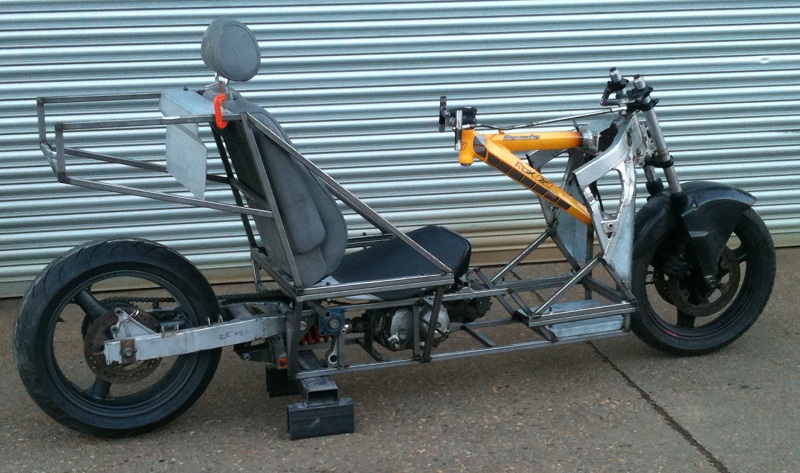Quote:
Originally Posted by visionary

Some replies
Benjamin T ...My opinion is that telescopic forks, while far from perfect, function adequately. Just take a look at MotoGP bikes, with incredible loads and massive grip from slick tyres, ridden to absolute precision using this lightweight and simple technology – what’s not to like? My requirements for handling precision are likely to be far lower, and hence below the critical limit for performance.
|
From a design viewpoint, a commuter vehicle requires the same level of consideration as a racer. (If Moto GP et al allowed Hossack, they'd all be running them within a season. Being able to brake harder/later than the rest puts you in front.) Just because something isn't going to run on the track doesn't mean you can slack off on the design. You hope this will take-off with the general public, right? That means you're hauling wives, brothers, daughters, fathers, and so on. Safety
is a critical point of performance.
Tank slappers are not limited to high rake-angled racers. Here's a nice cruiser getting laid down.
Heck, I've managed to do it on a suspension bicycle, once. While braking, that front fork shooting forward and bucking the bike during a loss of traction is killer.
Quote:
Additionally, as is true of any prototype, I don’t fully understand my handling requirements yet. Until I do, I want to use a “known constant” or control, which will allow me the chance to evaluate the vehicle handling – hence use something familiar. If, a year from now, I’m struggling with a handling anomaly, please feel free to remind me.
I am very grateful to you for “the rule of ten” and other manufacturing theories that I found at your suggestion.
|
Okay, I actually re-reviewed the entire thread and gave a closer look to the pictures and drawings. I don't mean to make this sound testy, but. It's just the way it's being delivered:
Ask yourself, where exactly are you in the design stage? Because it looks like you never built a model to study the structure and suspension geometry. You really, really,
really, need to stop and re-evaluate. I don't have a clear picture of where your build is at this exact moment but, I can tell you right now your steering is unbalanced.

The handlebar axis is not parallel with the steering head axis. (I can't tell from the pics if the connecting rod forms a parallelogram. The joints should be positioned at the same relative angle and distance from their axes.)
I'm going to leave the criticism there for now...
(One last plug for the Hossack and sharing a design theory of my own.)
The KISS principle doesn't really give one a scale to go by. So I say a design is simple when
guys banging rocks together in a cave can make it. While we have access to the latest and greatest in precision fabrication equipment and techniques, it's also expensive. A Hossack can be made by a home hobbyist with shoddy equipment. Tele-forks require precision machining, hardening, and plating and a lot more QC. So when it comes to production, there's a significant price-point difference when the other design can be made from two stampings, four bushings, and two spherical joints.
The final consideration I'm going to lay on you is "tuning." You can do all the development work you want, but, as you said. You won't know how it's going to perform until you build it. With threaded Heim joints positioned between shims, you can adjust the angles and dimensions until you find the sweet spot for production. No such luck with telies.
Take care, and at the very least fix the steering before you take it on the road.